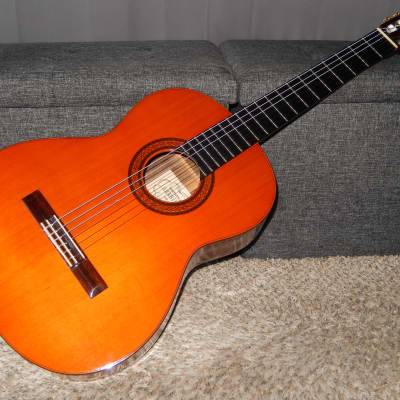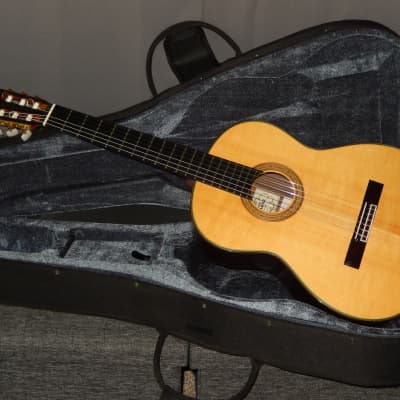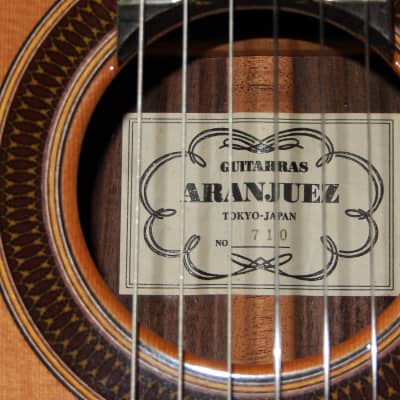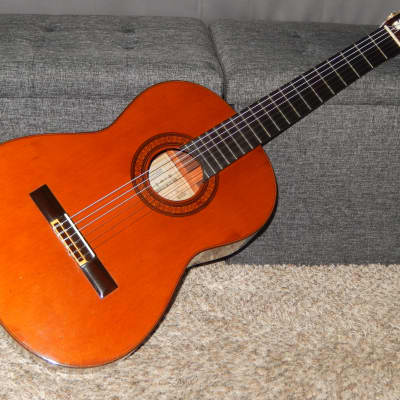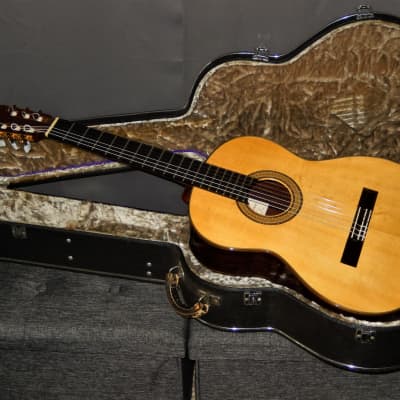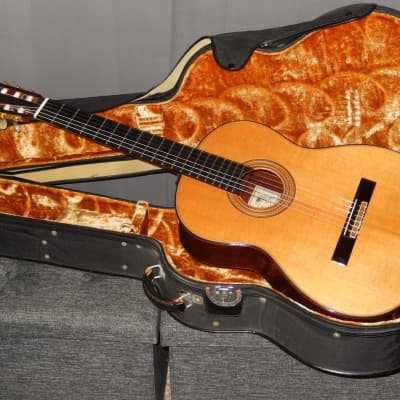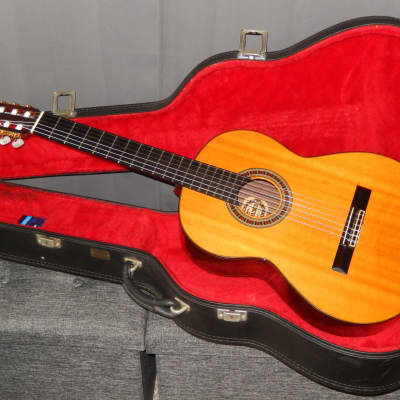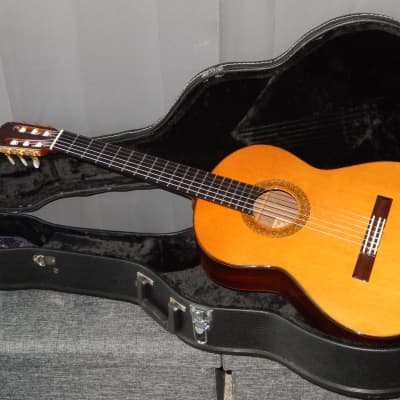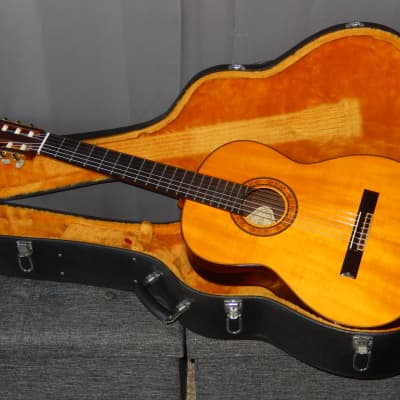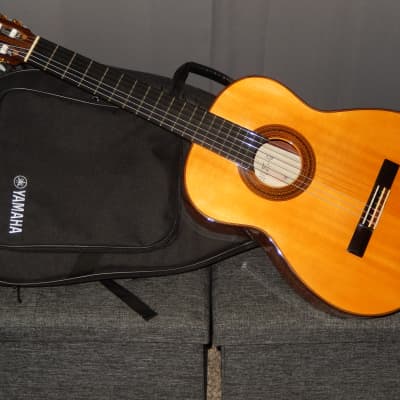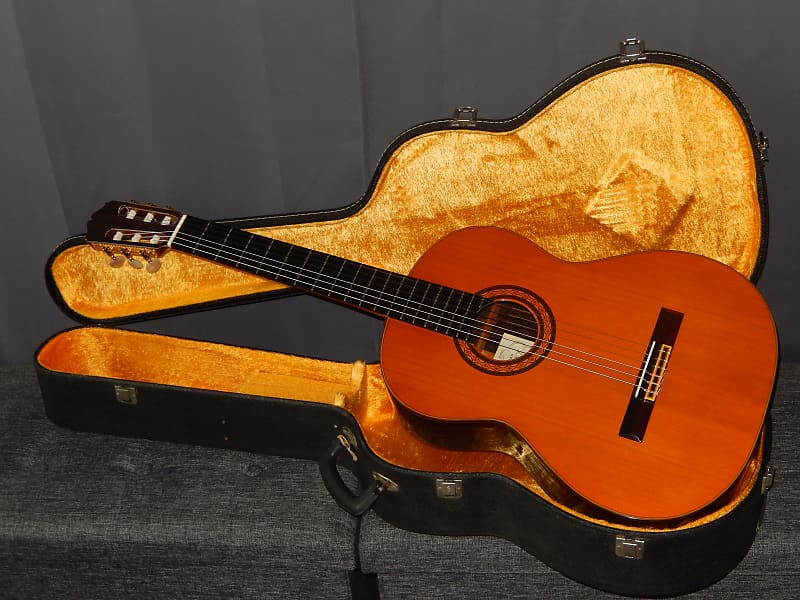

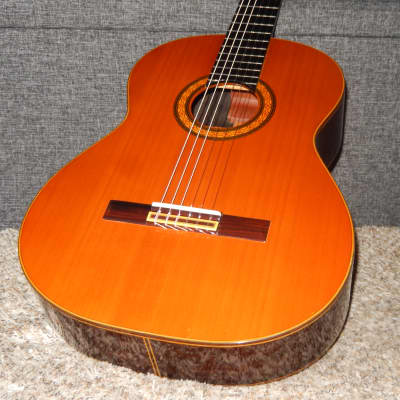
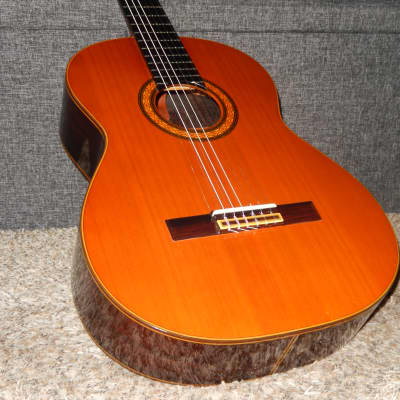
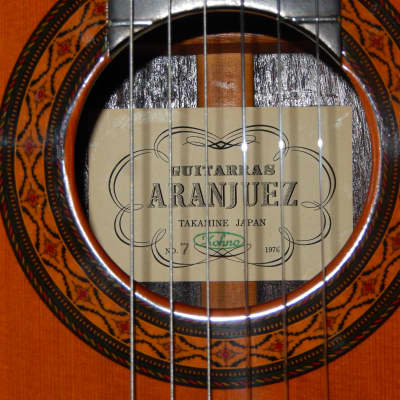
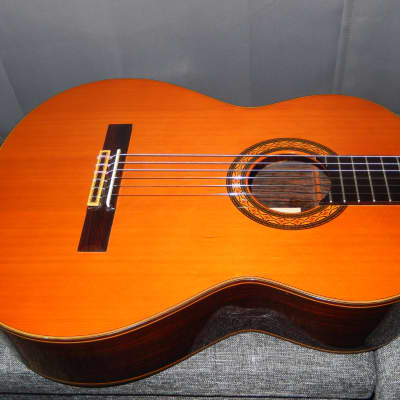
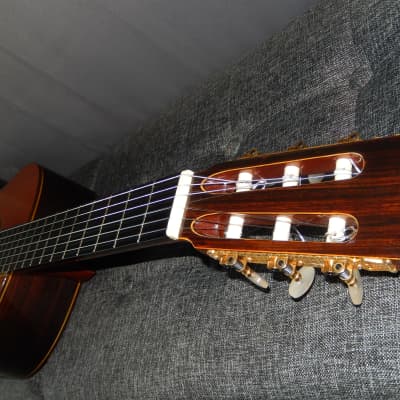
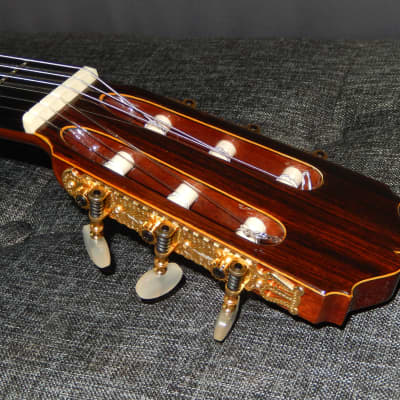
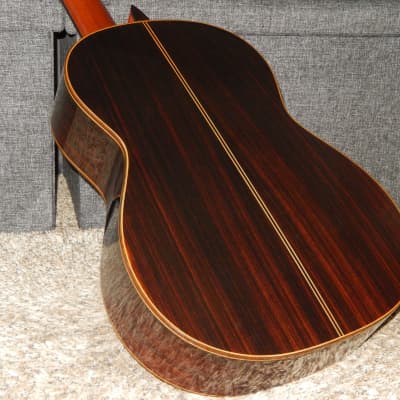
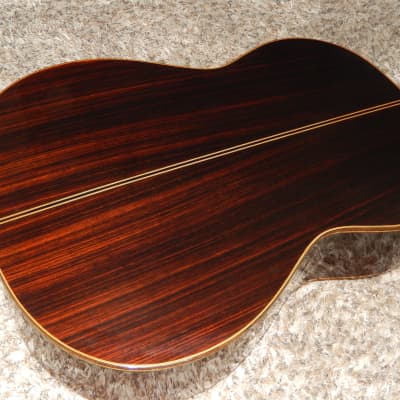
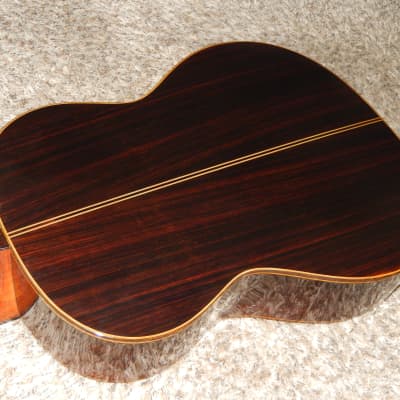
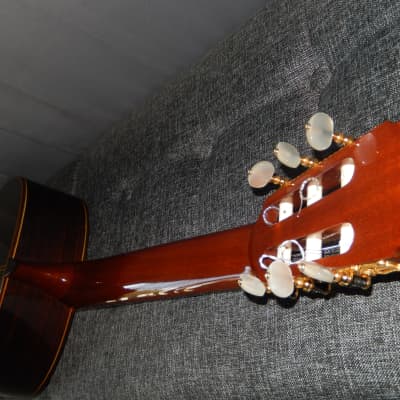
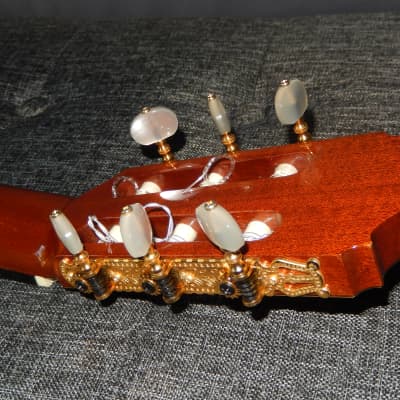
ARANJUEZ No7 1976
This Aranjuez No7 guitar was finished in 1976 at Masaru Kohno workshop. It was top of the line model of that era. Its body was made by Takamine Gakki, its soundboard and final assembly done either by Masaru Kohno himself or one of his apprentices.
Aranjuez guitars line was founded by Masaru Kohno in early 1970s with designation exclusively for Japanese market. They were initially made by Takamine workshop under Masaru Kohno’s supervision. From early 1980s through mid2010s they were made by Ryoji Matsuoka. After abrupt closure of Matsuoka’s workshop (late 2014) Aranjuez guitars are again made by Takamine co.
Since the origin of this brand the very top models were assembled and finished at Kohno’s workshop. The bodies of those top models were made by Takamine or Matsuoka workshops, while soundboards made by either Masaru Kohno himself or one of his associates, perhaps by Masaki Sakurai.
The secret of Aranjuez guitars is that they have always offered exceptional value to the player on a budget. Top Aranjuez models sound better than many guitars sold by leading Japanese makers at 2 times higher prices. Currently the very top Aranjuez model 725 (still being assembled and finished by Masaki Sakurai) is priced 250 000 yen. It sounds better than many other guitars sold in Japan for 500 000 yen.
This Aranjuez No7 guitar was priced 70 000 yen while it sounds much better than Kohno No10 from the same year (priced 100 000 yen). Only Kohno No15 (priced 150 000 yen) could be considered as equal grade instrument. It is quite likely that many players would favor this Aranjuez No7 over Kohno 15 model.
What is also very important to mention is that while all Aranjuez models of that (mid1970s) era had Cedar tops, all Kohno models had Spruce tops. Regardless of what some sellers believe and claim in their listings, Masaru Kohno wasn’t making Cedar top guitars until 1985. Those Kohno’s Cedar top models were made in very limited numbers (perhaps by special order only), their soundboards look very dark, rosettes and bridge decoration are different from those used on regular Spruce top models. In some sense this Aranjuez No7 guitar can be considered as Kohno 15 with Cedar top.
This truly majestic guitar offers exceptional volume and response combined with very romantic tonality. Its trebles are super sweet, round, yet very crisp. Basses are deep and full of overtones, yet relatively clean. All notes are well balanced, note clarity and separation fantastic, sustain amazing.
I am sure that every experienced player will agree that this guitar beats many “hand made in Spain” $10000+ guitars available on US market.
This guitar remains in overall excellent condition. Besides few ultra-light marks in the finish on its top, this guitar looks and smells like-new.
Specifications:
Top: High Grade Solid Cedar/cashew lacquer
Back and Sides: Solid Latin America Rosewood /cashew lacquer
Neck: Mahogany
Fingerboard: Ebony
Tuning Machines: high grade gold plated
Scale: 660 mm
Nut Width: 52 mm
Nut & Saddle: Bone
Current action is set to 3.30 mm under E6 and 2.80 under E1 with plenty of extra room on the saddle.
It will be shipped in used hard shell case in good condition.
Real Value of Japanese Vintage Guitars
The key to understand value of vintage Japanese guitars is to acknowledge galloping price inflation (devaluation of Japanese yen) during 1960s & 1970s. This inflation slowed down in 1980s.
During 1960s and most of 1970s model numbers of Japanese guitars were strictly interconnected with their prices in Japanese yen. By early 1980s and during following decades model numbers were no longer strictly associated with their prices. Some Japanese guitar makers introduced model names instead of model numbers. Others were still using model numbers with addition of letters and/or other symbols.
It is then important to understand that two Yamaha GC10 guitars made 10 years apart are two instruments of totally different class. The same applies to any other Japanese maker/brand.
The logical way to estimate the true class of any given Japanese made instrument is to compare its price with the average annual salary of wage workers in Japanese private sectors. This salary was: 450 600 yen in 1965 - 825 900 yen in 1970 - 1 868 300 yen in 1975 - 2 689 000 yen in 1980 - 3 163 000 yen in 1985 - 3 761 000 yen in 1990 - 4 107 000 yen in 1995 - 4 082 000 yen in 2000.
Any guitar priced 100 000 yen in 1970 (labelled as No10 or No100) would be priced 200 000 yen in 1975 (relabeled to No20, No200 or 2000), 300 000 yen in 1977 (labelled as No3, No30 or 3000) and 500 000 yen by 1985 (labelled as No50 or 5000).
Starting in 1977 Masaru Kohno introduced his new models No40 priced 400 000 yen and No50 priced 500 000 yen. By early 1980s Kohno started using model names instead of numbers and was steadily raising their prices without changing model labeling. His very top model 50 became model “Special”, and a decade later it became model “Maestro”. Naturally, all other Japanese guitar makers were doing similar pricing (labelling) upgrades.
Knowing all of that, you can bet on that Masaru Kohno No50 made in 1982 is practically the same grade instrument as Kohno No20 made in 1972, or Kohno no 30 made in 1975.
In early 1970s the lowest Ryoji Matsuoka (all plywood) model was 10, followed by (solid top) models 15, 20, 25, 30, 40, 50, 60, 80 and (all solid woods) models 100 and 150. Models 50, 60 and 80 were made with non-solid figured Brazilian Rosewood (double) back and sides and top model 150 was the only one made with solid figured Brazilian Rosewood b/s.
In 1980 the lowest Matsuoka model was (all plywood) 20, followed by (solid top) models 30,40,50, 60 and all solid woods models 80,100,150 and 200. By 1990 the lowest Matsuoka model was M40 and the highest was M300. By 2010 the lowest Matsuoka model was M50 and the top model was M270.
You can bet that Ryoji Matsuoka model 50 from 1980 is of the same grade as model M100 from 2000, model 100 from 1980 is of the same grade as model M150 from 2000, model 150 from 1980 is of the same grade as M200 from 2000 and model 200 from 1980 is of the same grade as model M300 from 2000.
It is important to mention that if modern era luthiers are using 40+ years old woods to make an “all solid” wood classical guitar, its price is minimum $8000.
All vintage guitars made with Brazilian Rosewood are especially precious, including those made straight grain varieties and those with non-solid b/s.
Because response and tonal properties of Spruce soundboards are improving over time, long seasoned Spruces are far more precious than long seasoned Cedars.
It is not very difficult to find out what are current prices of such guitars made by world’s leading luthiers.
Reverb Buyer Protection
Reverb has your back if your item is lost, damaged, or doesn't match its description. Simply report any issues within 7 days and we'll help you get a full refund.Learn more about Reverb Buyer Protection.
| Listed | 3 years ago |
| Condition | Excellent (Used) Excellent items are almost entirely free from blemishes and other visual defects and have been played or used with the utmost care.Learn more |
| Brand | |
| Model |
|
| Finish |
|
| Categories | |
| Year |
|
| Made In |
|
| Body Shape |
|
